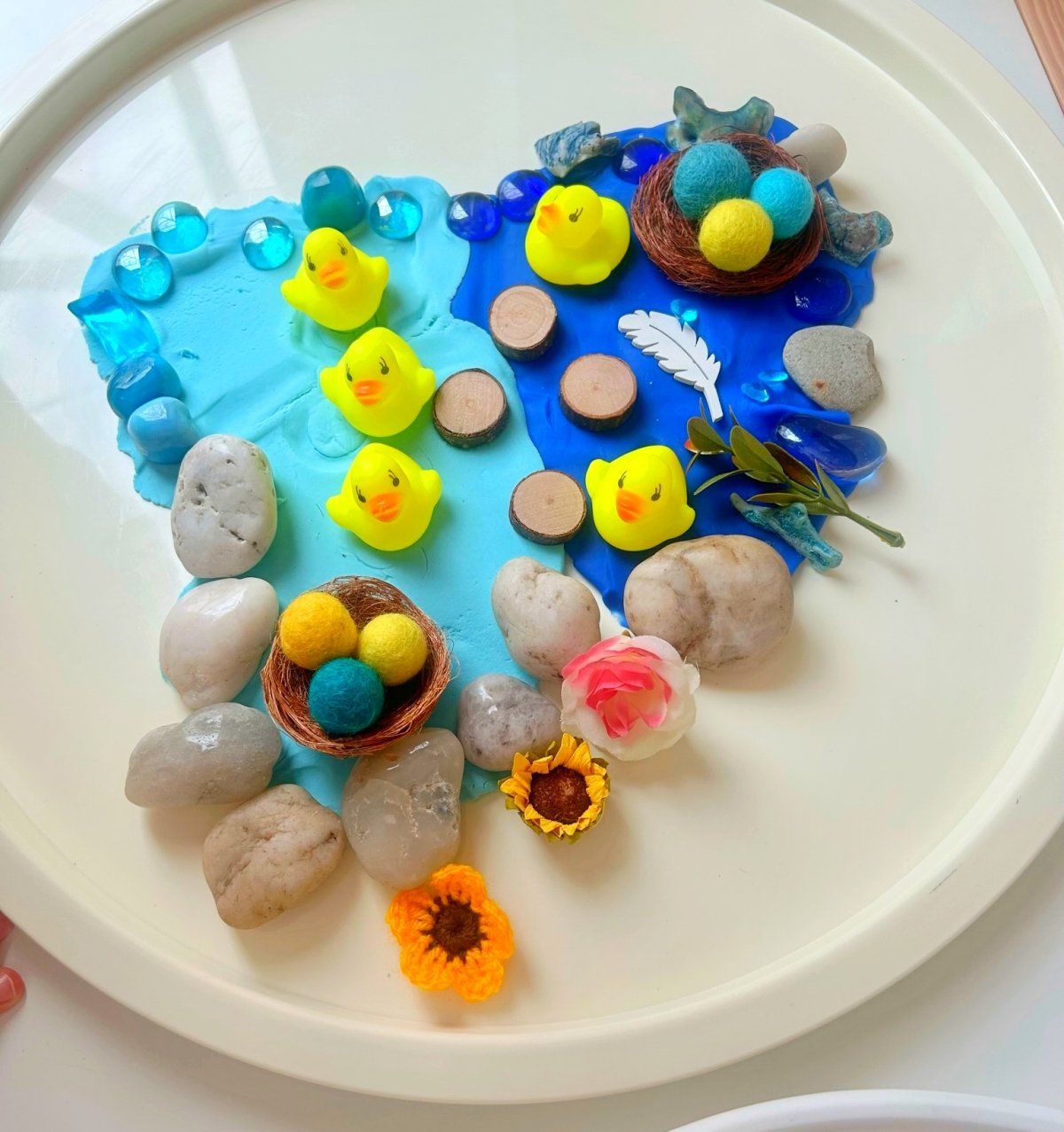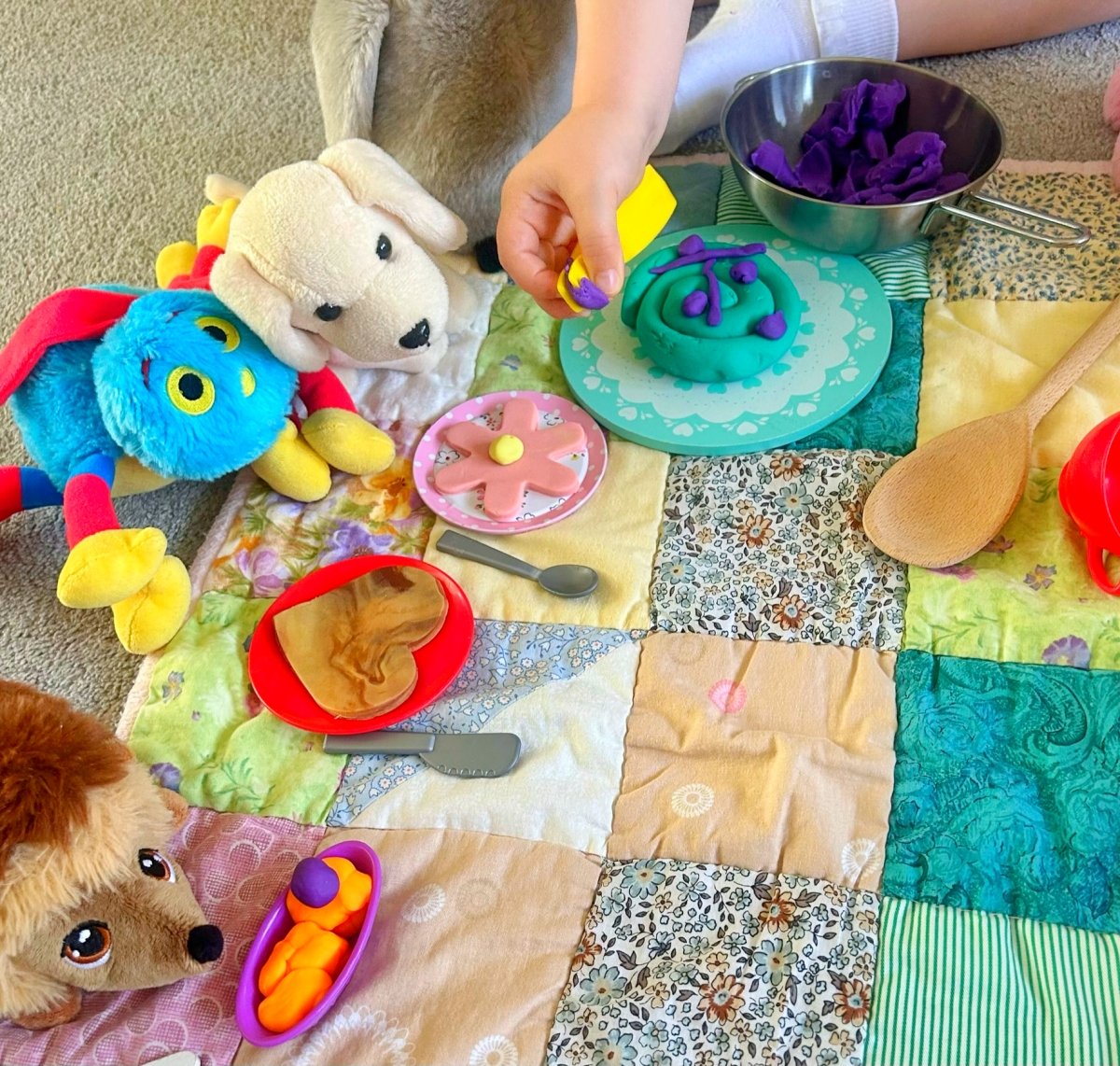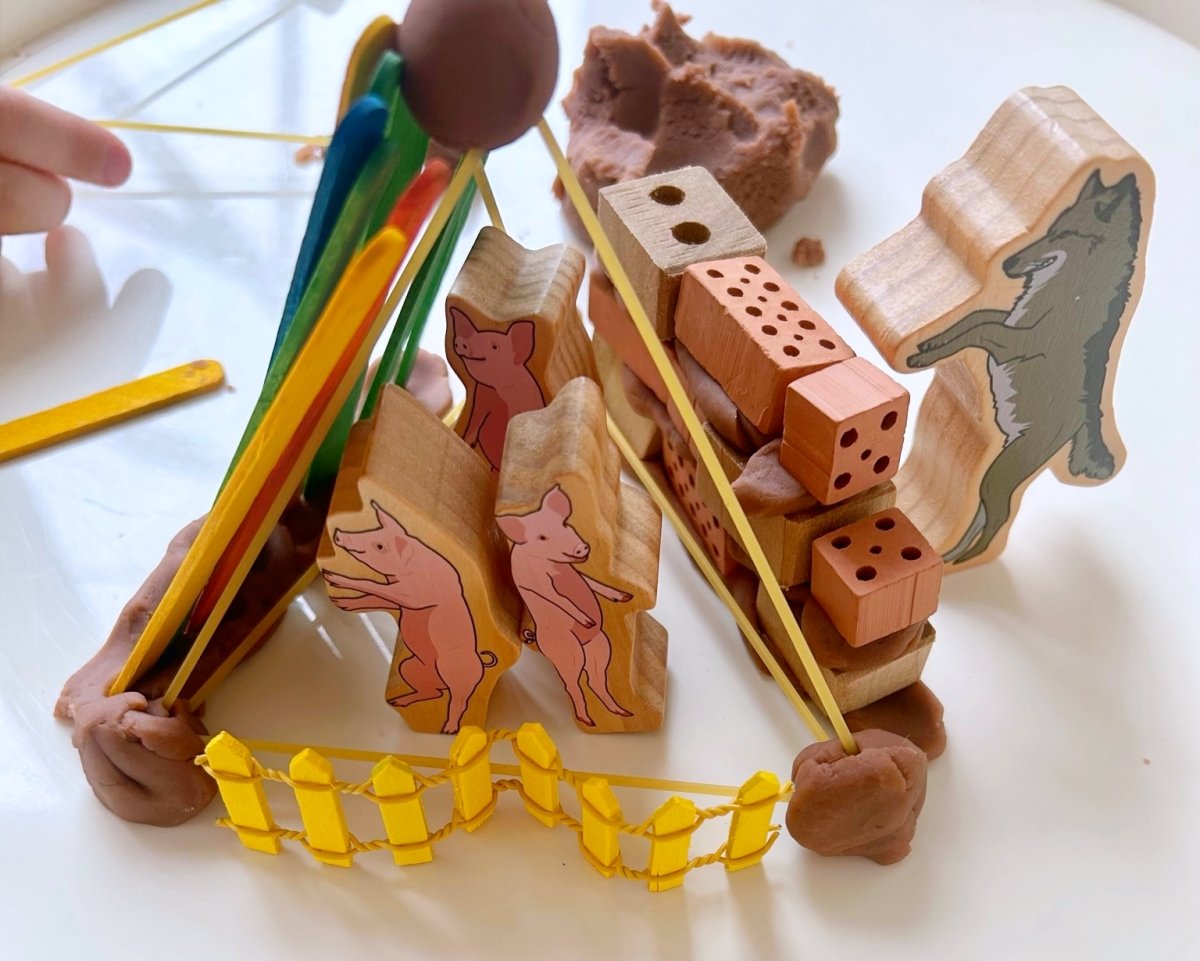Inside: Dive into the world of fun playdough activities and explore the remarkable benefits together!
Welcome to the colourful world of playdough, where squishing, squeezing, and moulding bring boundless joy to children of all ages! As a parent, I couldn't be more delighted to share the remarkable benefits of playdough activities, a discovery I made when my eldest daughter entered her toddler years. Playdough not only captured her imagination but also nurtured essential skills that have continued to enrich her learning journey.
Today, with both my daughters aged 6 and 3, playdough remains an evergreen favourite—always on standby to ignite their creativity and foster meaningful play.
Jump to:
Benefits of Playdough Activities
Playdough activities are fantastic for children who seek tactile, sensory input. When children manipulate playdough, they are exercising and strengthening small muscles in their hands developing fine motor control which will be needed to hold a pencil correctly, use the scissors and to be able to master buttons, laces and zips.
Squishing playdough develops bilateral coordination where both sides of the body work together to perform the same task. Hand-eye coordination is also reinforced as children use their hands to shape the dough.
Playing with playdough allows children to ‘cross the midline’ where they use their arms and hands to reach across their body to the other side when picking up objects on the table. When children can effectively cross the midline, they develop a dominant and assisting hand and they will be able to manipulate objects in the world around them with greater ease.
Related: For more fine motor fun, try these 10 Painting Activities which Support Fine Motor Development.
Delightful Playdough Activities for Toddlers and Preschoolers
Playdough Activity 1: Pizza Parlour!

One of the first skills to practise with your child when using playdough is to make a playdough pancake! This will require a child to use their fist to flatten their dough and the tips of their finger to push out the sides of the dough. Making playdough pizzas is a fun and engaging activity to practise this skill.

Once the flat bases for the dough and tomato puree have been created children will enjoy adding a selection of different toppings using loose parts such as dried pasta, wooden discs, glass beads, mosaic tiles and pipe cleaners to represent tomatoes, garlic, basil, pepperoni, ham and pineapple for instance. Playdough really helps to develop imagination, objects and materials used can represent something else entirely during play.

Children can further practise reading and counting skills by following order cards where the correct number of certain toppings needs to be carefully counted out and placed on. Pizzas of different sizes can be made which helps children to understand simple quantities such as large, medium and small.

For older children who can manipulate dough in a variety of ways different tools can be added to enhance play. Various rollers, a pizza cutter and a knife and fork can be used to cut and slice pizza bases.
Related: Your little pizza lover will love this Pizza shape matching and counting activity too!
Playdough Activity 2: Rainbow Snakes!

Another important skill to teach children when playing with playdough is how to make a playdough snake. As a child rolls and pushes the dough with both hands they are developing shoulder strength, bilateral coordination and wrist and finger extension. Pressure is applied through the palms of the hands to make sure the playdough snake is even before finger tips are used for precision.

A colourful rainbow can be made when practising this skill which helps young children to learn colour names. Once playdough snakes have been made children can use scissors or a knife to practise cutting and chopping skills.
Cutting playdough

Playdough is much easier to cut than paper as it is easier to grip and scissors glide through quickly. Time can be spent developing correct scissor grip and demonstrating how to open and close scissors. Indents can be made into the playdough snake to show children where to cut and once pieces have been snipped the exercise can be easily repeated.
Try our popular Haircut Cutting Game for more cutting and counting practices for your preschoolers!
Playdough Activity 3: Spiky Hedgehogs

Playdough can be used alongside a child’s current favourite story. They can recreate the characters or objects in the book with playdough allowing young children to gain an understanding of objects and experiences.

Playdough hedgehogs require children to use both palms of their hands to make a ball shape and to then pinch the dough at one end to create a face. When pushing the hedgehog spikes into the dough children will use their thumb, first finger and second finger to support which develops a pincer grasp which children will need when learning to hold a pencil correctly.
Playdough Activity 4: Five Little Ducks

As well as supporting story retelling, playdough can be used to engage children with rhymes and songs. A playdough tray can be an open invitation for a child to create. After singing the song ‘Five Little Ducks’ I invited my child to create a place for the ducks to live so that we could sing the song again and reinforce maths concepts by physically moving the ducks.

This type of play supports peer or adult interaction as children describe their actions and share new creations. Children will be able to experiment with new vocabulary they have learnt and show their understanding of a particular rhyme/song.
Adults can ask open-ended questions such as ‘Tell me about what you have made?’ ‘What else could you try?’ to encourage conversation.
Playdough Activity 5: Hold a Teddy Bears Picnic
One of my youngest daughters’ favourite activities is to gather her cuddly toys for a teddy bears picnic. Children will have great fun using cookie cutters and cake cases to make playdough treats for their toys. My daughter even decided to make cinnamon buns by carefully swirling playdough snakes.

Using the small pieces of dough, a child can practise feeding their toys with a spoon or picking pieces up with tongs which helps to develop strength and coordination of small muscles in the hand.
In my experience, this type of activity provides a high level of engagement and interest, allowing a child to stay focussed and develop their attention span.
Related: Love using play dough for pretend play? Then try this Dinosaur Rescue Activity with Play Dough!
Playdough Activity 6: Find the Pirate Treasure

Here’s another fun playdough activity idea: wrap small toys/objects in playdough and ask your child to discover them.
I took some craft jewels/beads and buried them completely in a ball of playdough before asking my daughter to find the pirate’s treasure. I encouraged my daughter to stretch the playdough and use her fingers to find the objects before pulling them out. This is a great activity for strengthening children’s hand arches and supporting skilled finger movement and grasp.
Playdough Activity 7: Building with Playdough

In this activity I set my eldest daughter a task of constructing a sturdy house for the 3 little pigs to live in. As she did this task, she was following design processes by: designing, building, testing and evaluating her product.
Giving children plenty of opportunities for hands- on play with different materials will allow them to develop creative thinking and problem solving skills.

Children may decide to build up or out using materials such as craft sticks, straws, toy bricks, pasta, tooth picks, pegs or foam blocks. Playdough can be used as ‘cement’ when stacking blocks or bricks. It can also hold straws together as children form different 2D and 3D shapes.
Playdough Activity 8: Making a Playdough Maze

Asking your child to make a playdough maze is a fantastic activity which can be easily achieved with household items such as a baking tray and a marble or a cardboard box, ping pong ball and a straw to blow the ball through the maze.
Playdough snakes form the walls of the maze and a marble/ball must travel from one end of the maze to the other, avoiding obstacles. Children can test, change and adapt their maze as they play. Solving the maze itself will require hand- eye coordination, fine and gross motor skills and teamwork from peers or family members.
My Favourite Natural Playdough Recipe

It can be really beneficial and fun to involve children in the playdough making process as they will learn how to measure and count whilst filling cups and emptying teaspoons.

We recently tried making natural playdough using lavender from our garden. The recipe involved:
- 1.5 cups of flour
- ½ cup of salt
- 2 tbsp of cream of tartar
- 2 tbsp of coconut oil (could use olive oil instead)
- A few sprigs of lavender
We then slowly added 1 cup of boiling water to make sure the mixture wasn’t too sticky and mixed all of the ingredients together before kneading well. My daughters loved playing with this natural dough. It was a lovely, sensory, calming experience focussing on kneading the dough and smelling the lavender scent.

Children can experiment with adding various natural ingredients to playdough such as rosemary, mint, oats, seeds, dried leaves/flowers or orange and lemon rind. Food colouring, glitter and different scents can also be added to dough depending on preferences.
Related: Use nature in your child's play with these fun Leaf Activities!
Questions About Learning with Playdough Activities
Children learn many valuable skills from playdough, including:
Fine motor skills
Creativity and imagination
Hand-eye coordination
Problem-solving skills
Language development
Sensory exploration
Math concepts
Social skills
Focus and concentration
Emotional regulation
Playdough develops fine motor skills by strengthening hand and finger muscles through activities like kneading, pinching, rolling, and cutting. It also enhances hand-eye coordination, finger dexterity, bilateral coordination, and the pincer grip. The resistance of playdough helps regulate hand muscle control, benefiting future handwriting skills and other tasks that require hand and finger dexterity. There are many other benefits of engaging in playdough activities for children!
Playdough can be used in various learning activities for children, such as Math exercises, alphabet and letter recognition, sensory exploration, Science concepts representation, storytelling, shape recognition, sorting, measurement practice, social skill development, creative art, emotional expression, and fine motor skill enhancement. Through these hands-on experiences, children can spark curiosity, foster creativity, and reinforce essential educational concepts across multiple subjects. You can find a list of our favourite playdough activities here!
Related: If your child is starting to learn letters and struggles with some of them, here's how you can use playdough in an activity to overcome ‘b’ and ‘d’ confusion!
Incorporating playdough activities into your children's routine opens up a world of endless possibilities. As they squish, shape, and create, they are not only nurturing their creativity but also honing essential skills that lay a strong foundation for their future learning. From fostering concentration to encouraging interactive play, the benefits of playdough are truly remarkable.So, gather the vibrant play dough, lay out the tools, and let the playdough fun begin!





Leave a Reply